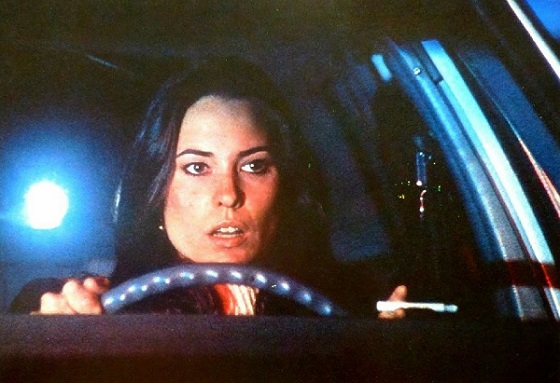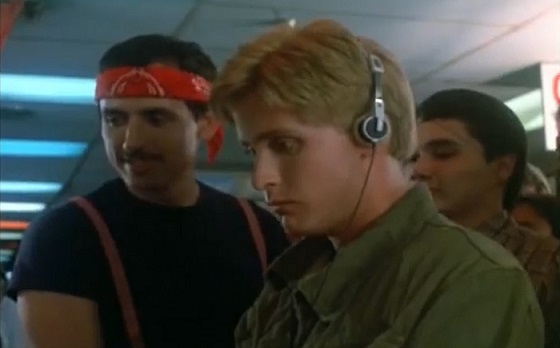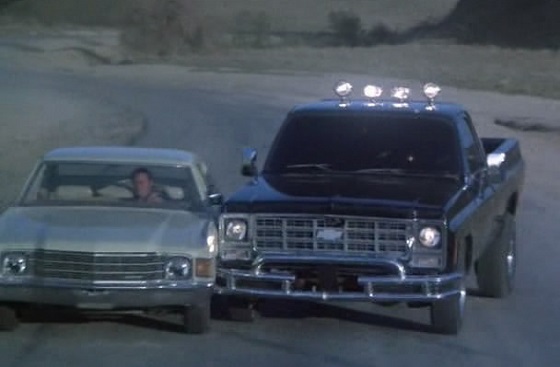The big difference between the classic horror anthologies of yesteryear and those that are made today is consistency. Today’s anthologies, movies like those found in the V/H/S and The ABCs of Death franchises, have different directors and writers for each segment, so the quality and tone can vary greatly. That’s not the case with the old-school classic anthologies. From 1924’s Waxworks right up to the beloved Creepshow movies of the eighties, horror anthologies were the vision of a single director, one filmmaker who would bring several stories to life by putting his or her personal thumbprint on each one. One of the most fun and forgotten of these classic anthologies is 1983’s Nightmares.

Not to be confused with the 1980 Ozploitation film Nightmares, the Nightmares anthology begins with “Terror in Topanga,” a tale about a young woman (played by Cristina Raines from The Sentinel) who goes out on a dark night for cigarettes and runs into a serial killer. Next up is “The Bishop of Battle,” about a young man (Emilio Estevez from Maximum Overdrive and Repo Man) who becomes a little too obsessed with a video game. That leads to “The Benediction,” a chapter about a priest (Lance Henriksen from, well, just about everything from Near Dark and The Horror Show to It’s in the Blood and Monday at 11:01 A.M.) who hits the road after a crisis of faith and has an altercation with an evil truck. Lastly comes “Night of the Rat,” a segment about a couple (The Thing’s Richard Masur and Alien’s Veronica Cartwright) who, along with their young daughter (Bridgette Anderson from Savannah Smiles), find that they have a rat problem – but, of course, it’s not just a normal rat.

All four segments that make up Nightmares were directed by Joseph Sargent (Jaws: The Revenge, The Taking of Pelham One Two Three), but the first three were written by Christopher Crowe (Fear, Whispers in the Dark) while the last was scripted by Jeffrey Bloom (Blood Beach, Flowers in the Attic). There are a couple of different rumors about how the film came about. One is that the four stories were originally shot for the ABC horror anthology series “Darkroom,” but were considered too scary for broadcast television. The other theory is that the segments were shot for an unrealized anthology series that Universal Studios culled together into a theatrically released movie. Both scenarios make sense, because Nightmares has a decidedly “television” feel to it.

Because Nightmares is the vision of a single director, all of the segments are consistent in quality and tone. However, every section falls into a different horror subgenre. “Terror in Topanga” is a slasher that draws influence from an old urban legend. “The Bishop of Battle” is a technophobic tale of addiction and obsession. “The Benediction” is a religious road rage movie, sort of like a cross between The Omen and Duel. Finally, “Night of the Rat” is a straight-up creature feature. All of the segments logically look and feel as if they are part of the same movie, but every viewer is bound to have a different favorite depending upon their own preferences and tastes in horror movies.

There are quite a few reputable and familiar actors that appear in Nightmares as bit players, a fact that may be further proof of its inception as a television show. William Sanderson, who was in Savage Weekend before becoming Larry with the brothers Darryl in “Newhart,” gives a brief performance in “Terror in Topanga” as a gas station attendant. Moon Unit Zappa (Frank Zappa’s daughter, who also appeared in The Boys Next Door) and Billy Jacoby (who was in Bloody Birthday and Cujo before settling in to play Ricky Schroder’s pal Brad on “Silver Spoons”) both play arcade-hanging mall denizens in “The Bishop of Battle.” Albert Hague from Fame (both the movie and the TV show) shows up in “Night of the Rat” as an exterminator. All of this is in addition to Raines, Estevez, Henriksen, Masur, and Cartwright in their leads.

Nightmares is very obviously a product of the eighties. Just about every aspect of the movie is dated, from the clothing and hair to the language and technology. The visual effects are primitive by today’s standards as well; although it’s the single biggest line-item in the production’s budget, the “hi-tech” computerized imagery in “The Bishop of Battle” is laughably bad. The soundtrack is full of eighties music as well, with songs by punk rock bands like Black Flag, Negative Trend, and Fear blasting from tape players and stereos throughout the film (Lee Ving, the lead singer for Fear, even plays the killer in “Terror in Topanga”). As funny as it seems at times, the datedness of Nightmares doesn’t really take away from the entertainment value of the movie. Instead, it kind of makes the film serve more as a fun time capsule to a simpler era of cinematic history.

Horror anthologies are a staple of the genre, and a popular one at that. And some of the best horror anthologies came out of the eighties. Once you get past the Creepshow series, Twilight Zone: The Movie, and Cat’s Eye, you’ve still got great stuff like Night Train to Terror, From a Whisper to a Scream, and, of course, Nightmares.
